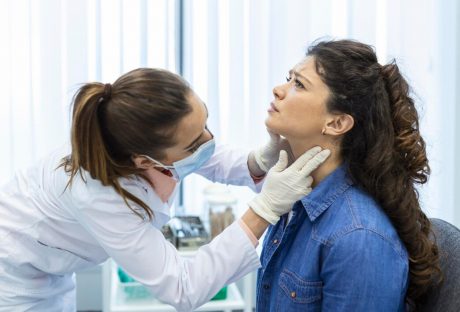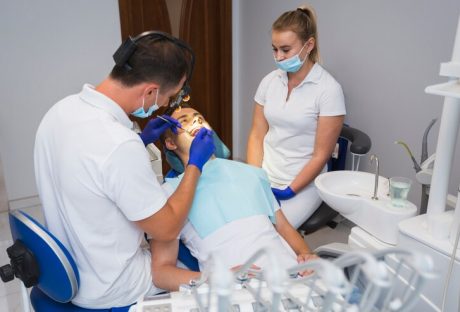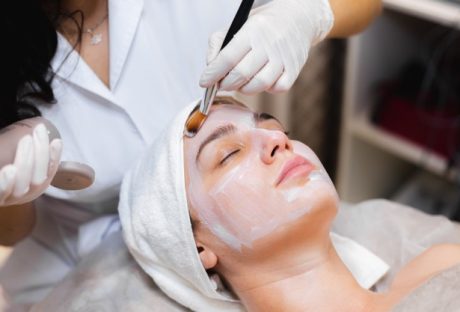Migraines are debilitating headaches that affect millions of Canadians, significantly impacting their daily lives.
These intense headaches can be accompanied by nausea, vomiting, and sensitivity to light and sound, making it difficult to function normally. Luckily, various migraine medications are available in Canada, offering hope for relief and improved quality of life.
1. Acute Migraine Relief
The primary goal of acute migraine medication is to stop the headache in its tracks and alleviate associated symptoms as quickly as possible.
Here are some commonly used options in Canada:
- Nonsteroidal Anti-Inflammatory Drugs (NSAIDs): Over-the-counter pain relievers like ibuprofen and naproxen are often the first defense against mild to moderate migraines. They work by reducing inflammation and pain.
- Triptans: These prescription medications are specifically designed for migraine relief and target various mechanisms involved in migraine attacks. They are highly effective but have potential side effects like dizziness and nausea.
- DHE (Dihydroergotamine): Another prescription medication, DHE, constricts blood vessels and reduces inflammation, relieving moderate to severe migraines. However, it comes with stricter usage guidelines and potential side effects.
2. Preventive Migraine Medication
For individuals experiencing frequent or severe migraines, preventive medication can be a game-changer. These medications aim to reduce the frequency, intensity, and duration of migraine attacks.
Here are some common options:
- Beta-blockers: Primarily used for blood pressure control, beta-blockers can also be an effective medicine to prevent migraines. They work by regulating heart rate and blood vessel activity.
- Antidepressants: Low doses of certain antidepressants can be helpful in preventing migraines, although the exact mechanism of action remains unclear.
- Calcium channel blockers: These medications, primarily used for treating high blood pressure and heart disease, can also be used for migraine prevention by affecting blood vessel function.
- CGRP (calcitonin gene-related peptide) monoclonal antibodies: These new and innovative medications target CGRP, a molecule in migraine pain pathways. They are highly effective for chronic migraines but come with a higher cost and require injection or infusion.
3. Complementary and Alternative Therapies (CAM)
While not a substitute for conventional medication, some complementary and alternative therapies might offer additional support in managing migraines.
These include:
- Acupuncture: The conventional Chinese medicine practice or acupuncture includes inserting very thin needles into some parts of the body. Studies suggest acupuncture might be effective in reducing migraine frequency.
- Massage therapy: Massage therapy can help relieve muscle tension, which can trigger some migraines.
- Biofeedback: This therapy teaches individuals to control their physiological responses, including stress and others, which might contribute to migraines.
- Dietary changes: Identifying and avoiding food triggers like cheese, chocolate, and alcohol can be helpful for some migraine sufferers.
4. Self-Management Strategies
Beyond medication and alternative therapies, individuals can play a crucial role in managing their migraines by practicing self-management strategies.
These include:
- Identifying and avoiding triggers: Recognizing and avoiding factors that trigger migraines, such as stress, certain foods, lack of sleep, or hormonal changes, can significantly reduce their occurrence.
- Maintaining a healthy lifestyle: Regular exercise, a balanced diet, and adequate sleep are essential for overall health and can reduce migraine frequency and severity.
- Relaxation techniques: Practicing relaxation techniques like meditation, deep breathing exercises, and yoga can help manage stress and tension, which can trigger migraines.
- Keeping a headache diary: Recording details about migraine attacks, including triggers, symptoms, and medications, can help identify patterns and inform treatment decisions.
Navigating Migraine Medication in Canada: What You Need to Know

Finding the right migraine medication is an individual journey, and it’s essential to consult with a healthcare professional to discuss your specific needs and medical history.
Here are some additional points to remember:
- Prescription vs. Over-the-counter: While some medications are available over-the-counter, others require a prescription from a doctor.
- Side effects: All medications have potential side effects, and it’s crucial to understand these and discuss them with your doctor before starting any medication.
- Drug interactions: Certain medications can interact, potentially causing adverse effects. Ensure your doctor knows all medications you are taking, including over-the-counter drugs and supplements.
- Cost considerations: The cost of medication can vary significantly, and some insurance plans may not cover all costs. Discuss this with your doctor and explore potential cost-saving options.
Seeking Support and Building a Management Plan
Managing migraines effectively requires exploring medication options and building a comprehensive management plan with external support. Here are key steps to empower yourself:
1. Seek Professional Guidance:
- Consult your doctor: They are your primary resource for diagnosis, treatment recommendations, and progress monitoring.
- Consider a neurologist: For complex or chronic migraines, consulting a neurologist specializing in headaches can provide additional expertise and treatment options.
- Join a support group: Connecting with others who understand the challenges of migraines can offer valuable emotional and practical support.
2. Develop a Personalized Plan:
- Work with your doctor: Collaborate to create a treatment plan that addresses your specific needs, considering medication options, lifestyle modifications, and complementary therapies.
- Track your progress: Keep a headache diary to record details of your migraines, including triggers, symptoms, and medications used. This information can be vital in identifying patterns and adjusting your plan as needed.
- Set realistic goals: Focus on achievable goals, such as reducing migraine frequency or managing daily activities effectively. Celebrating small successes can boost motivation and maintain a positive outlook.
3. Prioritize Self-Care:
- Manage stress: Practice relaxation techniques like meditation, deep breathing, or yoga to combat stress, a common migraine trigger.
- Maintain a healthy lifestyle: Prioritize regular exercise, a balanced diet of fruits, vegetables, whole grains, and adequate sleep. These lifestyle factors contribute significantly to overall well-being and can help manage migraines.
- Build resilience: Focus on activities that bring you joy and a sense of purpose. Maintaining a positive outlook and prioritizing self-care can improve your overall well-being and resilience in managing migraines.
Conclusion: Building a Brighter Future with Migraine Management
Living with migraines can be challenging, but with the right approach and support, individuals can effectively manage their condition and reclaim their quality of life. Remember, you are not alone on this journey.
Visit their website. They offer a variety of evidence-based and Health Canada-approved products, including Pascoe Migraine Relief, which can be a valuable addition to your migraine management plan.
It’s crucial to remember that finding effective migraine management is a collaborative effort. By working closely with your doctor, exploring various treatment options, and implementing self-management strategies, you can build a personalized plan that empowers you to live a life less limited by migraines.
Together, we can turn the tide on migraines and build a brighter future for individuals living with this condition.
Read Also:






















